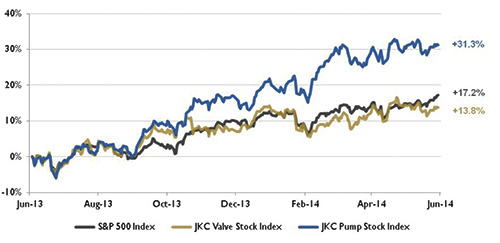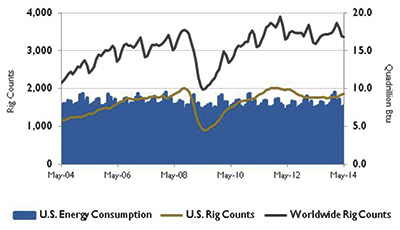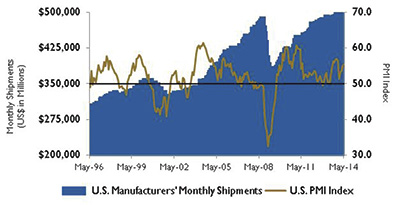07/09/2014
The Jordan, Knauff & Company (JKC) Valve Stock Index was up 13.8 percent during the last 12 months, while the broader S&P 500 Index was up 17.2 percent. The JKC Pump Stock Index was up 31.3 percent for the same time period.1
 Figure 1. Stock indices from June 1, 2013 to May 31, 2014 Source: Capital IQ and JKC research. Local currency converted to USD using historical spot rates. The JKC Pump and Valve Stock Indices include a select list of publicly-traded companies involved in the pump and valve industries weighted by market capitalization.
Figure 1. Stock indices from June 1, 2013 to May 31, 2014 Source: Capital IQ and JKC research. Local currency converted to USD using historical spot rates. The JKC Pump and Valve Stock Indices include a select list of publicly-traded companies involved in the pump and valve industries weighted by market capitalization. Figure 2. U.S. energy consumption and rig counts Source: U.S. Energy Information Administration and Baker Hughes Inc.
Figure 2. U.S. energy consumption and rig counts Source: U.S. Energy Information Administration and Baker Hughes Inc. Figure 3. U.S. PMI index and manufacturing shipments Source: Institute for Supply Management Manufacturing Report on Business and U.S. Census Bureau
Figure 3. U.S. PMI index and manufacturing shipments Source: Institute for Supply Management Manufacturing Report on Business and U.S. Census Bureau 
